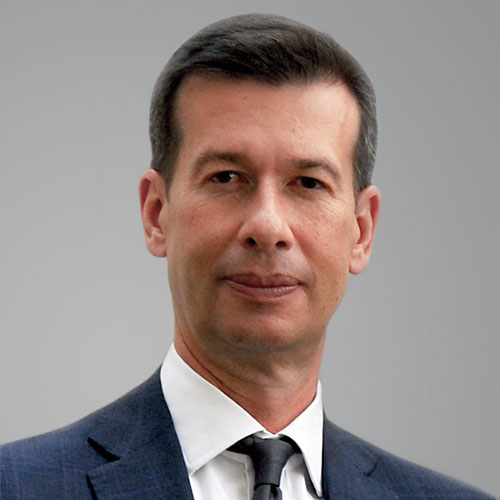Allnews, Nicolette de Joncaire (11.06.2024) - Since 2022, certain strategies have been putting in solid performances and their outlooks are excellent. We talk to UBP’s Kier Boley.
From market darlings at the end of the 1990s and the start of this century, hedge funds saw their popularity wane following the global financial crisis. However, some hedge funds continued to perform well, and the asset class returned excellent results in 2022 and 2023. Since 2015, very large, multi-strategy platforms, such as those from Brevan Howard, Marshall Wace and Millennium, have predominated. Kier Boley is Co-Head of Alternative Investment Solutions at UBP, which has some USD 17 billion invested in hedge funds.
Hedge funds seem to have been unpopular for some years now.
At the beginning of this century, hedge funds enjoyed huge popularity, particularly as they represented a significant element of diversification in portfolios and offered attractive performances that were decorrelated from traditional assets. Between 2010 and 2020, these performances became less impressive due to structural changes in the market, which had a negative impact on their popularity. Furthermore, since 2015, other alternatives started to appear in the form of private equity and private debt. Since the Covid crisis, however, we have seen a clear improvement in hedge funds’ performances, as well as a gradual uptick in interest from investors.
Equity long/short strategies will continue to offer opportunities.
Why did their performances worsen?
It was because the industry became more conservative, largely due to a shift in the profile of hedge fund investors. US pension funds have become very fond of them, which has brought about much larger volumes and which has led to much more modest fees, alongside markedly less daring strategies. With volatility being very low, hedging was expensive and hard to monetise. Add to that much tighter regulations following the financial crisis, which burdened us with even more costs until 2021, when inflation returned.
What impact did this have on the asset class as a whole?
As the costs of running an independent hedge fund are too high, a number of managers got into very large, multi-strategy platforms, such as Brevan Howard, Marshall Wace and Millennium.
Why do these large platforms dominate the market?
They’ve shown themselves to be very active in recruiting talent from across the whole of the financial sector, although recently they’ve returned more to poaching managers from each other in a “talent war”. In addition, they’re allocating their investments across a large number of strategies and managers within each of their strategies, which generates a certain level of diversification. On top of that, their liquidity-efficient business model enables them to over-allocate with greater leverage. Last, being structured to use stop-loss, traders see their allocations as having less risk when they lose money and they’ll be totally excluded when they reach a specific level of loss. This limits the loss any one trader can cause to the whole portfolio.
What about fees? Have they really come down?
With the UCITS format, there’s no doubt that fees have fallen. They’re about 1% for management fees and 15% for performance fees; strategies with a large exposure to market beta have lower commissions that those which generate alpha. What we’ve seen appear with the big popular funds is a direct result of management fees for the end client (known as “pass-through”). In the end, this can represent a management fee of to up to 8%, along with a performance fee of 20%. This approach has been adopted by the big multi-strategy platforms.
Suffice it to say that they have to put in excellent performances to merit this type of fee, but nonetheless, their funds are closed and their waiting lists are very long.
Why is UBP one of the rare private banks that has maintained an interest in this asset class?
It’s because, out of the spotlight, some funds have continued to perform very well – putting in performances of 10–12% with a Sharpe ratio of 2 – and a part of our clientele tends to prefer them to private equity and private debt because of their liquidity. Hedge funds produced some excellent results in 2022 when the markets suffered, but also in 2023. Private clients are most often looking for the UCITS format for liquidity reasons, whereas institutional clients are perfectly happy with the offshore versions in Luxembourg or Ireland which offer quarterly liquidity.
What level of AUM do you have in this asset class?
We have around USD 17 billion exposed to hedge funds; this is thanks to a team of 26 spread out across Geneva and London, along with a few people in Paris and Hong Kong.
Which strategies have given you the best results?
Over the last 12–18 months, equity long/short funds with a GARP1 approach to quality tech businesses in the United States or luxury businesses in Europe have seen good performances. Market-neutral strategies also performed well in 2022 and 2023 as a result of the dispersion in equity markets due to rate sensitivity. The healthcare, biotech and public service sectors, for example, struggled to adapt to the rise in interest rates. Global macro strategies also had very good results thanks to interest rate expectations and the increase in volatility. Commodity strategies should not be overlooked, of course. In fixed income, trading in micro-rates, which exploit the minute differences between sovereign bond rates in the US, the UK and Europe, have performed well, as have convertibles.
What’s your outlook for the asset class?
Equity long/short strategies will continue to offer opportunities, which is also true for the energy sectors stimulated by the energy transition and defence spending. In the wider commodities world, both agriculture and metals are showing potential. Don’t forget, after fifteen years of bear markets, it’s very hard to pick out quality hedge funds that are active in commodities, as the majority of good managers have gone over to the big, multi-strategy platforms. Nonetheless, they are again starting to appear. In the US, London and Switzerland, you’re also seeing opportunities in long/short credit, as higher rates are allowing better filtering of firms’ potential. As long as we find ourselves in a more volatile market – inflation is likely to remain higher that it was in the past, with interest rates above those levels seen before 2020 – we will need to set objectives for the longer term. Hedge funds should offer stable returns, which could lead investors to return to these strategies.









